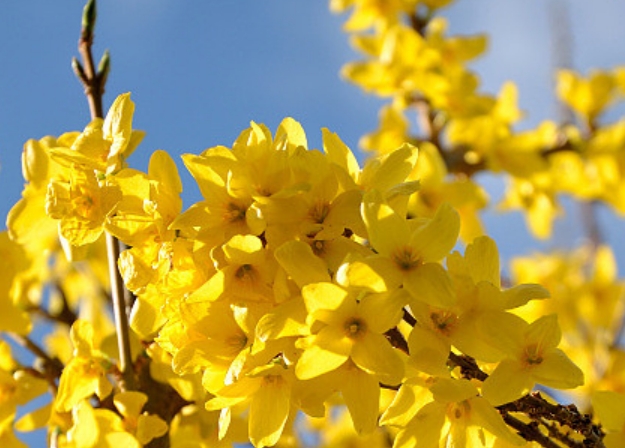Overview
Latin name: Forsythia suspensa
Common name: weeping forsythia
Abbr: Fsu
Taxonomy: Oleaceae/Forsythieae/Forsythia
References: NCBI:txid126418
Level: Chromosome
Chromosome number: 2n=2x=28
Genome size: 737.5Mb

Introduction: Forsythia suspensa, commonly called weeping forsythia, is an upright, arching, deciduous shrub most noted for its weeping habit. As a shrub, it typically grows 6-10' tall and as wide, but weeping branches may be trained on a support structure to grow somewhat taller as a woody vine. Golden 4-petaled flowers appear in profusion before the foliage in late winter to early spring. One of the earliest blooming shrubs... a true harbinger of spring. Opposite, serrate, ovate, simple to trifoliate, medium green leaves (to 4" long). No appreciable fall color. This species is native to China and is one of the parents of the popular Forsythia x intermedia hybrids.
Culture: Easily grown in average, medium, well-drained soils in full sun to part shade. Adapts to wide range of soils. Best flower production in full sun. Prune immediately after spring flowering (wide range of pruning options include simply removing old stems and shaping to cutting back to the ground to revitalize). If left alone, plants may colonize an area over time because weeping branches often root where they touch the ground.
Uses: Grown primarily for early spring accent and weeping branches. Group in borders. Mass on banks or slopes. Naturalize in sunny areas of open woodland gardens. Informal hedge. If planted above a wall, branches will cascade downward to cover the wall surface. May be trained to grow as a vine.
Bloom Time: March to April
Sun: Full sun to part shade
Water: Medium
Information sources: PlantFinder